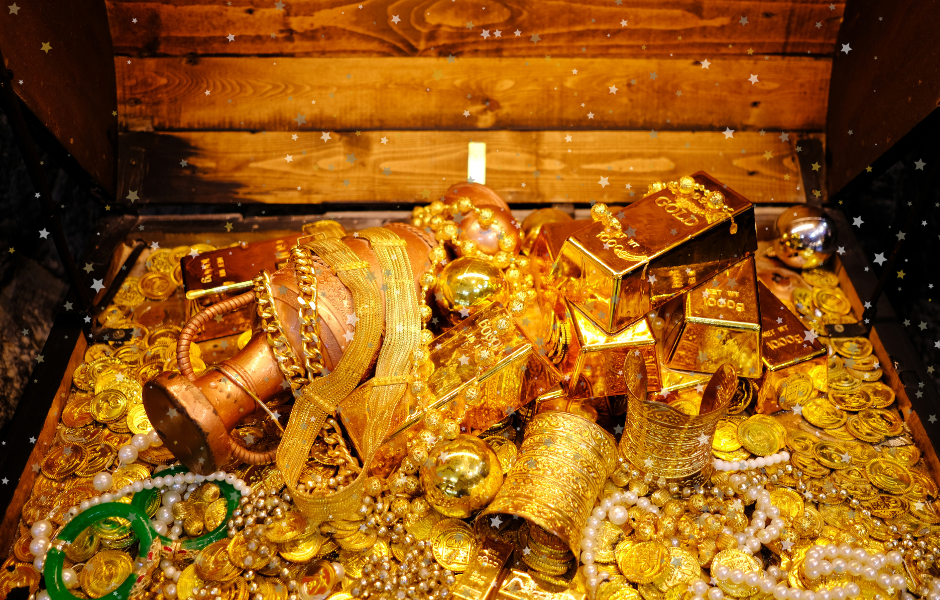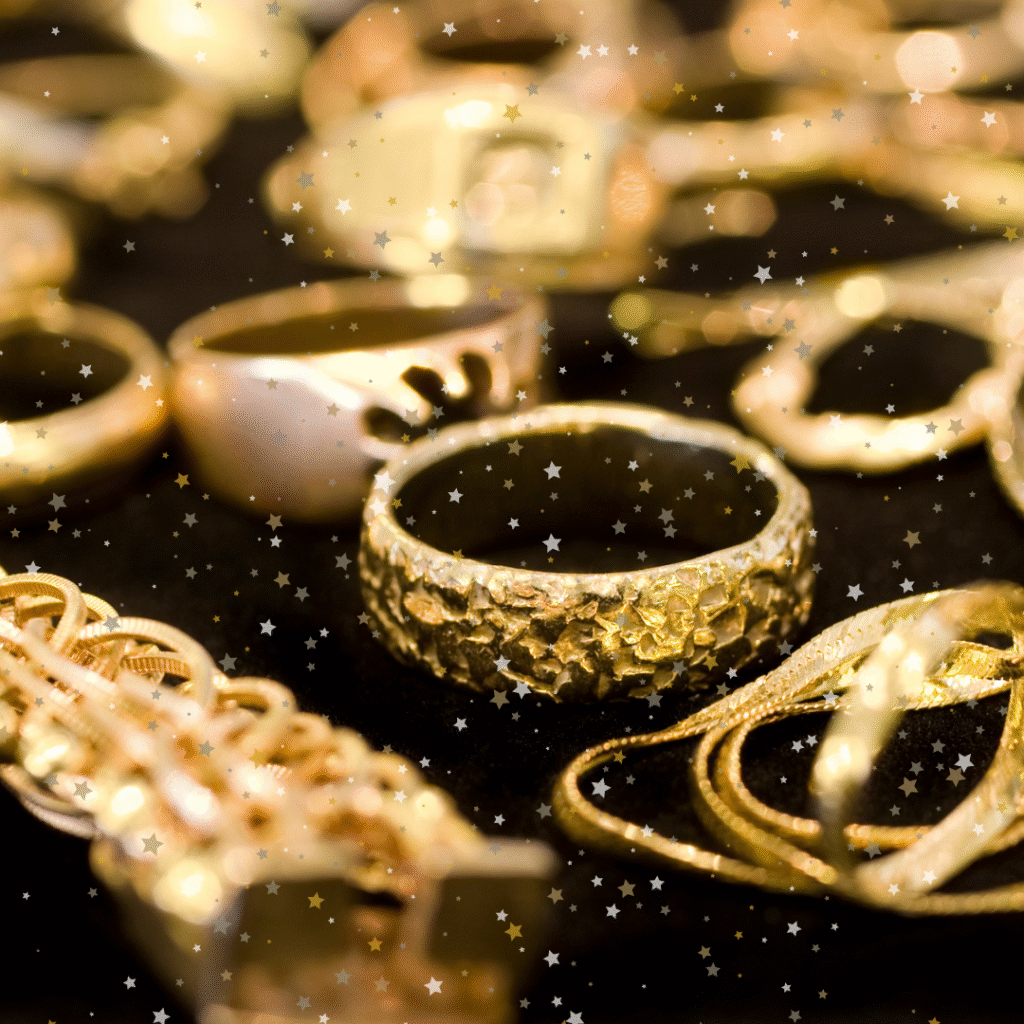
This children’s article, Why is gold so valuable? A kids’ guide to gold, has been written for native English speakers and learners of English as a second or foreign language. It can help children practise reading and comprehension, learn useful vocabulary, and discover the science and history behind one of the most valuable metals on Earth. Written by Sinead O’Carroll, an experienced teacher and writer.
Gold through history
Gold is a soft, yellow metal that people have treasured for thousands of years. It is known as a precious metal, which means it is rare and valuable.
Gold has been used to make jewellery, decorate temples and palaces, and store wealth.
It is shiny, does not rust, and can be shaped into many forms. These features have made it useful and beautiful across different cultures and time periods.
Where does gold come from?
Gold is found in the Earth’s crust. It is usually part of a type of rock called ore.
The process of taking gold out of the ground is called gold mining.
Gold mining happens in many parts of the world. In fact, every continent except Antarctica has gold mines. However, opening a gold mine takes a lot of time and work.
Before mining begins, experts must find a deposit and study it carefully to check how much gold is there and how it can be removed safely. It can take many years before a mine is ready to produce gold.
What happens to gold after mining?
Once gold is taken from the ground, it is processed and refined to make it very pure. A gold bar is a solid block of gold with a purity of at least 99.5%. These bars are often called bullion, and they are usually stored in bank vaults.
Gold is also made into special coins called gold bullion coins. They are flat and round, like the coins we use to pay for things, but they are much more valuable.
Each coin is made by a country’s government and has a special design to show where it comes from.
Why is gold so important?
Gold is valuable for many reasons. It is rare, long-lasting, and beautiful. People buy gold to wear as jewellery, to keep as savings, or to collect.
In some places, gold is used in religious or cultural ceremonies. In others, it is seen as a way to protect money during difficult economic times.
Gold has both cultural and financial value, and its importance is recognised across the world.
To find out more, visit World Gold Council.

Article vocabulary list
- Precious – Very valuable and special, often because it is rare.
- Ore – Rock that contains metal, such as gold.
- Gold mining – The process of digging gold out of the Earth.
- Deposit – A natural amount of gold found in the ground.
- Refined – Made very pure by removing other materials.
- Bullion – Gold in the form of bars or coins that is very pure and valuable.
- Cultural – Related to the ideas, customs, and traditions of a group of people.
- Religious – Connected to religion, beliefs, or spiritual practices.
- Financial – Related to money, savings, or the economy.
- Bank vaults – Very strong, locked rooms in banks where valuable things are safely stored.
Comprehension questions
Just click the plus (+) to see the answer
1. What kind of metal is gold?
a) Soft and precious
b) Hard and rusty
c) Light and cheap
Answer: a) Soft and precious
2. What is ore?
Answer: Rock that contains metal like gold
3. What is the purity of a gold bar?
Answer: At least 99.5%
4. Which of these is true about gold bullion coins?
a) They are used to buy sweets
b) They are made of plastic
c) They are made by governments and are very valuable
Answer: c) They are made by governments and are very valuable
5. Name one reason why people buy gold.
Answer: To wear as jewellery / to keep as savings / to use in cultural ceremonies (any one of these is correct)
Sinead is a writer and EFL teacher with eight years’ experience. She’s a native English speaker who loves making news stories fun and easy to understand for children around the world. Her passions include travel, animals, and helping to make the world a kinder, more sustainable place.




